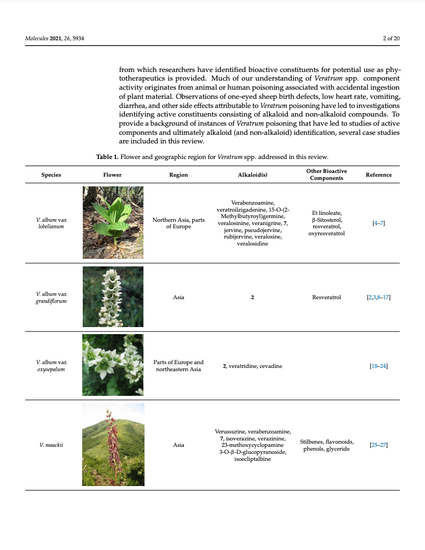
Veratrum spp. grow throughout the world and are especially prevalent in high mountain meadows of North America. All parts of Veratrum plants have been used for the treatment of ailments including injuries, hypertension, and rheumatic pain since as far back as the 1600s. Of the 17–45 Veratrum spp., Veratrum californicum alkaloids have been proven to possess favorable medicinal properties associated with inhibition of hedgehog (Hh) pathway signaling. Aberrant Hh signaling leads to proliferation of over 20 cancers, including basal cell carcinoma, prostate and colon among others. Six of the most well-studied V. californicum alkaloids are cyclopamine (1), veratramine (2), isorubijervine (3), muldamine (4), cycloposine (5), and veratrosine (6). Recent inspection of the ethanolic extract from V. californicum root and rhizome via liquid chromatography–mass spectrometry has detected up to five additional alkaloids that are proposed to be verazine (7), etioline (8), tetrahydrojervine (9), dihydrojervine (10), 22-keto-26-aminocholesterol (11). For each alkaloid identified or proposed in V. californicum, this review surveys literature precedents for extraction methods, isolation, identification, characterization and bioactivity to guide natural product drug discovery associated with this medicinal plant.
Available at: http://works.bepress.com/owen_mcdougal/64/
